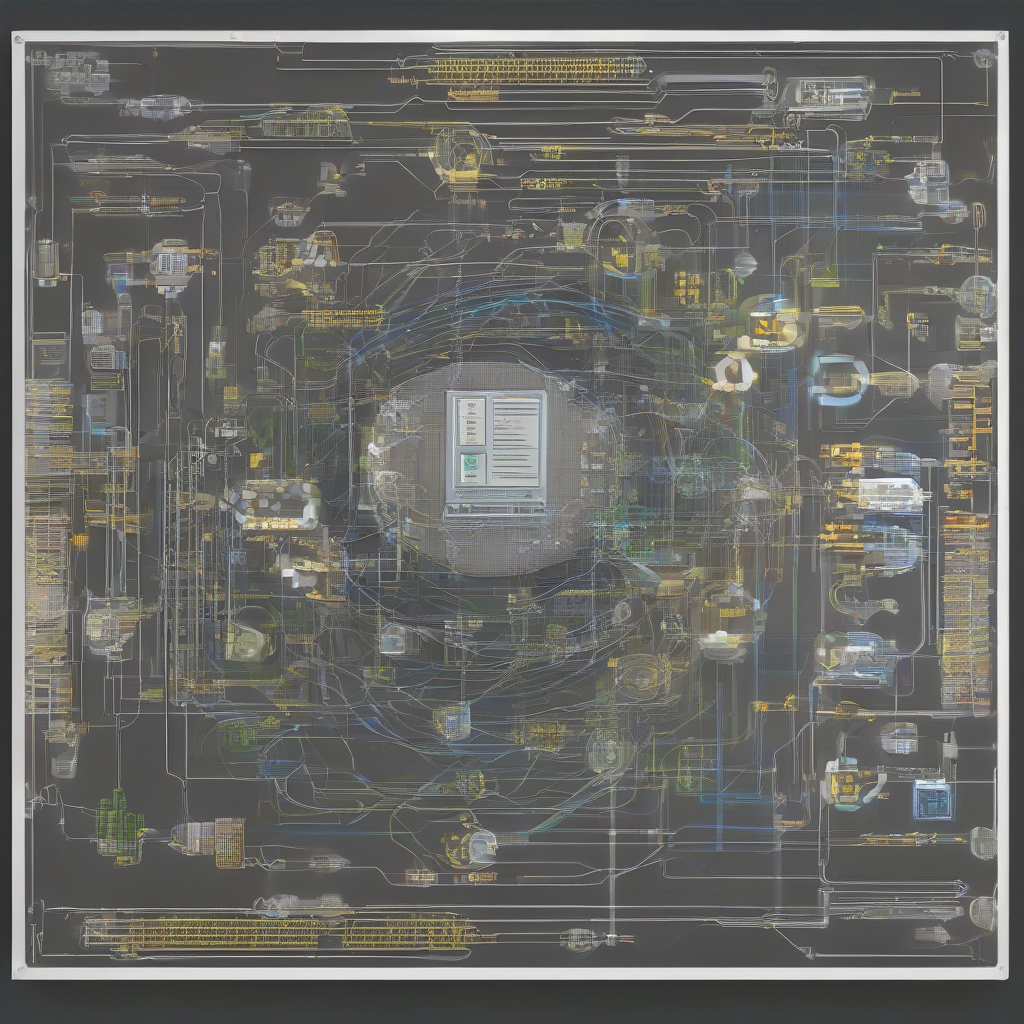Fortifying the Digital Fortress: A Deep Dive into Cybersecurity in Industrial Control Systems
Industrial Control Systems (ICS), the nervous systems of critical infrastructure, are increasingly vulnerable to cyberattacks. From power grids and water treatment plants to manufacturing facilities and transportation networks, ICS control the essential functions of modern society. Their interconnectedness, often relying on legacy systems and outdated security practices, presents a significant cybersecurity challenge. This comprehensive exploration delves into the intricacies of ICS cybersecurity, examining the threats, vulnerabilities, and the crucial strategies for effective protection.
The Evolving Threat Landscape
The threat landscape for ICS cybersecurity is constantly evolving, becoming more sophisticated and targeted. Traditional cyberattacks, such as malware and denial-of-service (DoS) attacks, remain prevalent. However, advanced persistent threats (APTs), often state-sponsored or financially motivated, pose a more insidious danger. These actors are capable of penetrating ICS networks undetected, maintaining persistent access, and exfiltrating valuable data or disrupting operations for extended periods.
- Malware: Industrial malware, specifically designed to target ICS components, can cause significant damage, from data corruption to complete system shutdown.
- Phishing and Social Engineering: Human error remains a major vulnerability. Phishing attacks, exploiting human psychology to gain access credentials, are a common entry point for malicious actors.
- Denial-of-Service (DoS) Attacks: DoS attacks overwhelm ICS systems with traffic, rendering them unavailable and disrupting critical operations.
- Advanced Persistent Threats (APTs): These highly sophisticated attacks involve prolonged surveillance and infiltration, aiming for long-term access and data exfiltration.
- Insider Threats: Malicious or negligent insiders can pose a significant risk, with access to sensitive systems and data.
- Supply Chain Attacks: Compromising the security of components or software within the supply chain can provide a backdoor into the ICS.
Vulnerabilities in ICS Environments
The unique characteristics of ICS environments contribute to their vulnerability. Many ICS components are legacy systems, lacking modern security features. The reliance on proprietary protocols and communication methods often hinders effective security implementation. Furthermore, the need for real-time control and operational continuity frequently compromises security considerations.
- Legacy Systems: Outdated hardware and software lack essential security features, creating vulnerabilities to exploitation.
- Lack of Patching and Updates: Regular security patching and updates are crucial, yet often neglected in ICS environments due to operational concerns.
- Hardcoded Credentials: Using hardcoded credentials weakens security, making systems susceptible to compromise if credentials are discovered.
- Lack of Segmentation: Insufficient network segmentation allows an attack to spread rapidly throughout the ICS network.
- Inadequate Access Control: Weak or improperly configured access control mechanisms allow unauthorized access to sensitive systems.
- Unsecured Remote Access: Remote access to ICS components is necessary for maintenance and management, but requires stringent security measures to prevent unauthorized access.
Cybersecurity Strategies for ICS
Protecting ICS environments requires a multi-layered approach, combining technological, procedural, and human elements. A comprehensive cybersecurity strategy should encompass risk assessment, vulnerability management, intrusion detection and prevention, and incident response capabilities.
1. Risk Assessment and Management
Thorough risk assessment is paramount. Identifying potential vulnerabilities and threats allows for prioritization of security measures and resource allocation. Regular risk assessments are crucial to adapt to the evolving threat landscape.
2. Vulnerability Management
Proactive vulnerability management involves identifying and mitigating vulnerabilities before they can be exploited. This includes regular security patching, software updates, and security audits.
3. Network Security
Robust network security is critical for ICS protection. This encompasses network segmentation, firewalls, intrusion detection systems (IDS), and intrusion prevention systems (IPS).
- Network Segmentation: Dividing the ICS network into smaller, isolated segments limits the impact of a successful attack.
- Firewalls: Firewalls control network traffic, blocking unauthorized access and malicious activity.
- Intrusion Detection Systems (IDS): IDS monitor network traffic for suspicious activity, alerting administrators to potential threats.
- Intrusion Prevention Systems (IPS): IPS actively block malicious traffic, preventing attacks from reaching their targets.
4. Endpoint Security
Securing individual devices within the ICS network is vital. This includes endpoint detection and response (EDR) solutions, anti-malware software, and regular security audits.
5. Access Control and Authentication
Strong access control and authentication mechanisms are essential to restrict access to sensitive systems and data. This involves robust password policies, multi-factor authentication (MFA), and role-based access control (RBAC).
6. Data Security and Backup
Protecting sensitive data from unauthorized access and loss is crucial. Data encryption, data loss prevention (DLP) measures, and regular data backups are essential.
7. Incident Response Planning
A well-defined incident response plan is vital for handling security incidents effectively. This includes procedures for detection, containment, eradication, recovery, and post-incident analysis.
8. Security Awareness Training
Educating personnel about cybersecurity threats and best practices is essential. Regular security awareness training minimizes human error, a major vulnerability in ICS environments.
9. Compliance and Regulations
Adhering to relevant industry standards and regulations is critical. Compliance with frameworks like NIST Cybersecurity Framework, ISA/IEC 62443, and other relevant regulations ensures a robust security posture.
The Future of ICS Cybersecurity
The cybersecurity challenges facing ICS will continue to evolve. The increasing adoption of Internet of Things (IoT) devices, cloud computing, and artificial intelligence (AI) introduces new vulnerabilities and requires adaptive security strategies. The development of advanced threat detection and response capabilities, along with proactive security measures, will be crucial for maintaining the security of critical infrastructure.
- Artificial Intelligence (AI) and Machine Learning (ML): AI and ML will play a significant role in enhancing threat detection and response capabilities.
- Blockchain Technology: Blockchain can enhance data integrity and security within ICS environments.
- Secure Development Lifecycle (SDL): Implementing SDL practices throughout the software development process is vital for building more secure ICS systems.
- Collaboration and Information Sharing: Collaboration between industry stakeholders, government agencies, and cybersecurity researchers is essential for sharing threat intelligence and best practices.
In conclusion, securing ICS environments is a complex and ongoing challenge requiring a holistic and proactive approach. By implementing robust security measures, fostering a culture of security awareness, and adapting to the evolving threat landscape, organizations can significantly reduce their risk and protect the vital infrastructure that underpins modern society.
